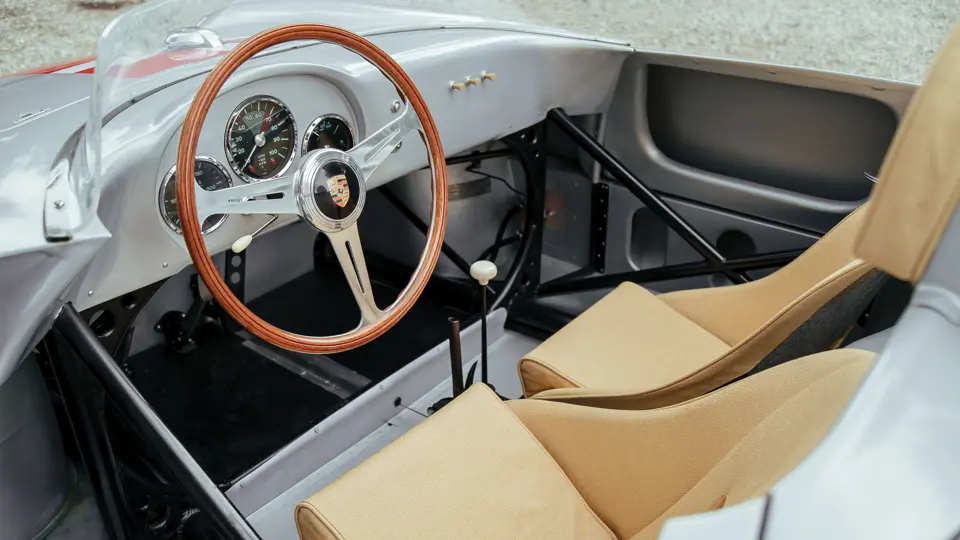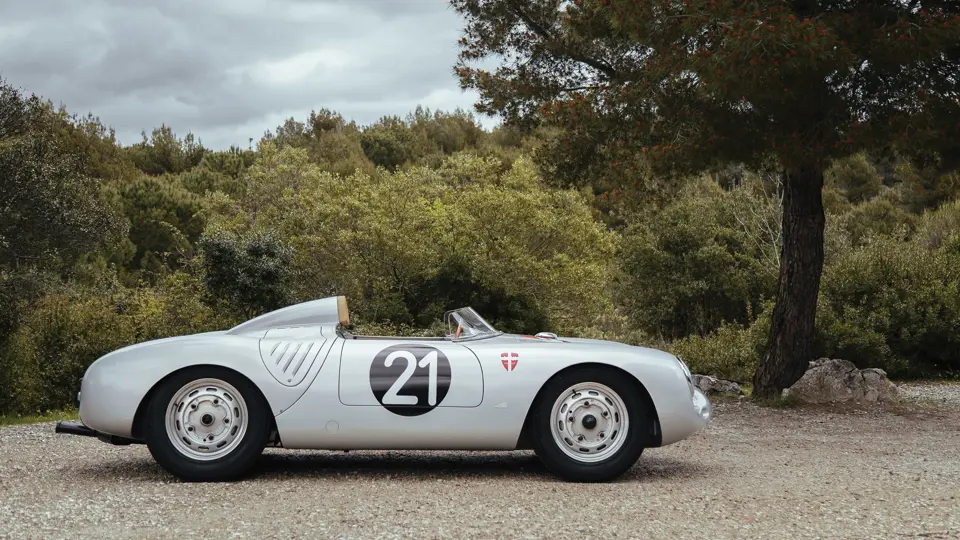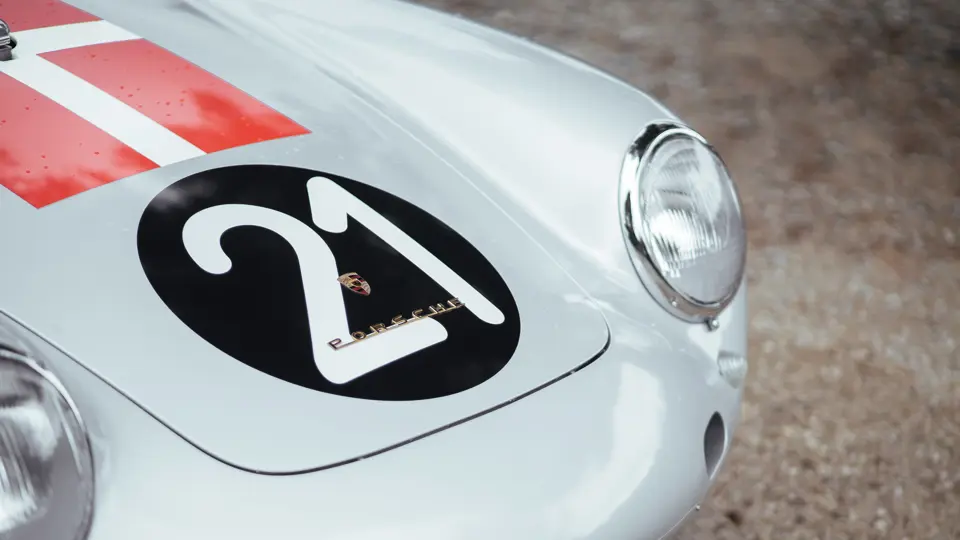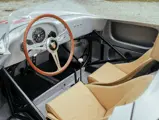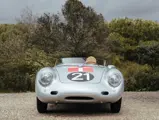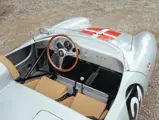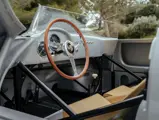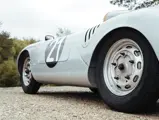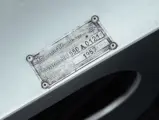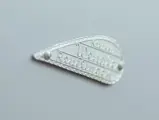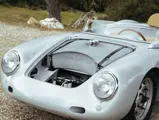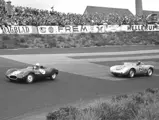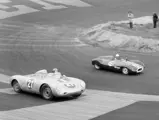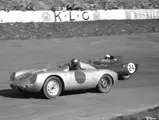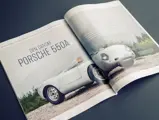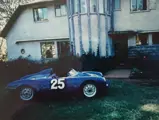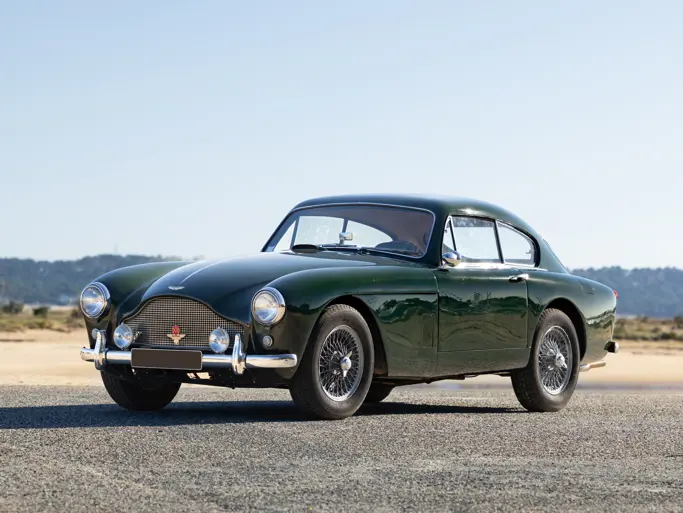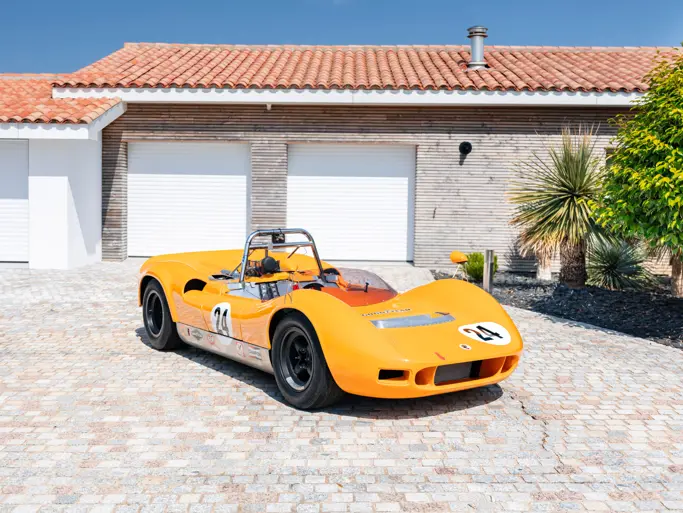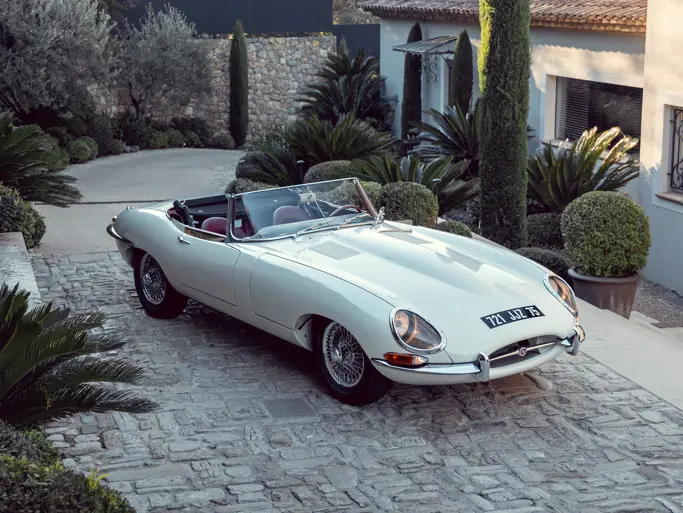
1957 Porsche 550A Spyder by Wendler
{{lr.item.text}}
€3,380,000 EUR | Sold
{{bidding.lot.reserveStatusFormatted}}
- The 15th of 40 examples built; the only example sold new to Denmark
- Fascinating early competition history in Denmark and East Africa
- Documented provenance, including single Italian ownership for 31 years
- Comprehensive four-year restoration completed in 2016
- Eligible for a multitude of vintage racing and concours events worldwide
- 15° di soli 40 esemplari costruiti; l'unico venduto nuovo in Danimarca
- Affascinante storia iniziale, fatta di gare in Danimarca ed in Africa orientale
- Provenienza documentata, inclusa la singola proprietà italiana durata 31 anni
- Restauro completo, durato quattro anni, completato nel 2016
- Idonea per una moltitudine di gare d’epoca, così come manifestazioni e concorsi per autovetture classiche in tutto il mondo
The 550A Spyder was Porsche’s first purpose-built competition model, introducing a new lightweight spaceframe chassis, fully independent suspension, a five-speed gearbox, and revised coachwork. The 550A differed from its predecessor in a number of particulars. Most notably, the ladder-type frame was replaced by a steel-tube spaceframe which was both stiffer and lighter, with a weight savings of 16 kg (35.3 lbs.). The weight of the complete body was reduced by no less than 27 kg, care to the fact that the new frame provided higher mounting points that allowed for many of the body reinforcements to be eliminated. Torsional stiffness of the frame was tripled, and the overall stiffness was five times that of the previous type ladder frame. Overall, the 550A hardly weighed 530 kg (1,168 lbs.), excluding fuel, but including the compulsory spare wheel.
The rear suspension was changed from a normal swing axle to a low pivot swing axle, while a front anti-roll bar was added. These modifications considerably improved the car's handling. The 550A was equipped with dual-circuit brakes while power from the basically unmodified engine was increased to 135 bhp at 7,200 rpm with the compression ratio raised from 9.5 to 9.8.1. The Solex carburetors were also replaced by Weber 40 DCM twin-choke downdraft carburetors.
Umberto Maglioli’s overall victory at the 1956 Targa Florio commenced the model’s successful competition record, and just 40 examples were ultimately produced.
Chassis number 0121 is the 15th car built, and benefits from a well-documented life, including fascinating period racing history and a recent four-year restoration. After finishing assembly in late March 1957, the 550A was sold to Danish racing patron Preben Andersen (principal of the Scuderia Palan) as the only example earmarked for Denmark.
With Denmark’s flag painted across the hood, the Porsche was piloted by local racing legend Julius Voigt-Nielsen, and he triumphed in his first outing at the Roskilde Ring in late April. He earned two more victories in June and August, and two 3rd-place finishes to end the season.
In late 1958, the 550A was sold to John Manussis, a British racing driver residing in Kenya who won the East African Safari Rally several times, often employing Lucille Cardwell as his navigator. Following an unrelated accident that left Manussis unable to drive, Cardwell took the wheel alone and she twice roared to victory at the Nakuru Park Motor Circuit in December 1961.
By early 1962, the Porsche passed into the possession of Mrs. Cardwell and her husband, William J. Cardwell, and they continued to campaign the car from their home in Tanzania. Later in the decade, the spyder was sold to Gordon Crow, a dealer in Nairobi, and he repainted the car blue and entered numerous local events. During his ownership, the 550A was seen in 1969 by Porsche engineer and soon to be factory driver, Jürgen Barth.
In 1978, the Porsche was acquired by Italian collector, a Brescia resident, Giuseppe Freschi. He retained possession for 31 years while entering the spyder in the Mille Miglia several times, driving the event as recently as 2010.
In 2011, the 550A was acquired by Pierre Asso of France, but he only briefly kept the car before selling it to its current custodian, who was impressed by the spyder’s originality and completeness. In 2012, the consignor commissioned a specialist to conduct a comprehensive four-year restoration, and every attempt was made to utilize correct factory tools and techniques where necessary. Completed in 2016, the impressive refurbishment returned the car to its original factory appearance in every detail. Following a post-restoration inspection, Jürgen Barth declared, “550A-0121 is perfect in its original form, and all technical aspects are like it was in 1957.”
Having accrued just 100 kilometers since restoration, this breathtaking Porsche is ideal for participation in significant touring events like the Mille Miglia or the Le Mans Classic. It benefits from a well-documented ownership chain that is recounted in two private reports by highly regarded Porsche experts Jürgen Barth and Andrew Hosking. Equally poised for the concours field, the beautifully presented spyder would make a crowning addition to most any sporting collection, beckoning Stuttgart enthusiasts worldwide.
La 550A Spyder è stata la prima vettura pensata e realizzata da Porsche espressamente per le competizioni, ed ha introdotto il nuovo telaio tubolare alleggerito, sospensioni completamente indipendenti, cambio a cinque velocità e una carrozzeria rivista. La 550A differiva dalla vettura che l’aveva preceduta in molti particolari. In particolare, il telaio a longheroni è stato sostituito da uno in tubi di acciaio, più rigido e leggero, con un risparmio di peso di 16 kg (35,3 libbre). Il peso della carrozzeria è stato ridotto di 27 kg grazie anche al fatto che il nuovo telaio permetteva di avere punti di ancoraggio più elevati, che hanno permesso l'eliminazione di molti dei rinforzi della carrozzeria. La rigidità torsionale del telaio tubolare, confrontata con quella del telaio a longheroni, è stata triplicata così come la rigidità complessiva, cinque volte quella del precedente telaio. Complessivamente, la 550A pesa appena 530 kg (1,168 libbre), escluso il carburante, ma, includendo nel peso, la ruota di scorta obbligatoria.
Per quanto riguarda la meccanica, la sospensione posteriore era passata dal normale asse oscillante all’asse oscillante incernierato in basso, ed era stata aggiunta una barra antirollio anteriore. Queste modifiche, hanno notevolmente migliorato la guidabilità della vettura. La 550A, inoltre, era equipaggiata con il sistema frenante a doppio circuito e la potenza del motore, sostanzialmente invariato, era stata portata a 135 CV a 7.200 giri/min. aumentando il rapporto di compressione da 9,5 a 9,8:1. I carburatori Solex erano stati rimpiazzati dai Weber 40 DCM, doppio corpo, rovesciati.
La vittoria di Umberto Maglioli alla Targa Florio del 1956, giunto primo assoluto, ha dato il via alla lunga serie di successi del modello, di cui, alla fine, verranno prodotti soli 40 esemplari.
Il telaio numero 0121 è abbinato alla 15a vettura costruita, arrivata a noi con una storia ben documentata, caratterizzata dall’affascinante parte iniziale, ricca di competizioni, e, più recentemente, con un restauro durato 4 anni. Dopo esser stata completata, a fine marzo 1957, la 550A è stata venduta al danese Preben Andersen, titolare della Scuderia Palan e rimarrà l’unica 550A venduta in Danimarca.
Con la bandiera della Danimarca dipinta sul cofano, questa Porsche è stata pilotata dalla leggenda locale delle corse, Julius Voigt-Nielsen, e ha trionfato al suo debutto nelle competizioni, al Roskilde Ring, a fine aprile. Prima della fine della stagione, otterrà altre due vittorie, in giugno ed in agosto, e due terzi posti.
Alla fine del 1958, la 550A è stata venduta a John Manussis, pilota britannico residente in Kenya, più volte vincitore dell’East African Safari Rally, spesso impiegando Lucille Cardwell come sua navigatrice. In seguito a un incidente, non collegato alla macchina, che lasciò Manussis impossibilitato a guidare, Cardwell si mise lei stessa al volante, vincendo per ben due volte, nel Dicembre del 1961, sul circuito Nakuru Park Motor. All'inizio del 1962, la Porsche diventa di proprietà della signora Cardwell e di suo marito, William J. Cardwell, che abitano in Tanzania e che continuano a farla correre. Alla fine degli anni ’60, la Spyder viene venduta ad un commerciante di Nairobi, Gordon Crow, che, dopo averla ridipinta in blu, l’ha utilizzata per numerose competizioni locali. È nel 1969, durante questa proprietà, che la 550A viene vista da Jürgen Barth, ancora “semplice” ingegnere della Porsche ma, presto, promosso pilota ufficiale della casa.
Nel 1978, la Porsche è acquistata dal collezionista italiano Giuseppe Freschi, di Brescia. Freschi terrà la macchina per i successivi 31 anni, disputando con lei diverse volte la Mille Miglia, l’ultima nel 2010.
Nel 2011, la 550A è stata acquistata dal francese Pierre Asso che l’ha tenuta per un breve periodo prima di venderla all'attuale custode, che rimase colpito dall'originalità e completezza della Spyder. Nel 2012, il conferente ha incaricato uno specialista di effettuare un restauro completo, durato quattro anni, eseguito facendo ogni possibile sforzo per utilizzare, dove necessario, strumenti e tecniche di riparazione originariamente utilizzate dalla fabbrica. Completato nel 2016, l'importante restauro ha riportato ogni dettaglio della vettura al suo aspetto originale. Dopo un'ispezione post-restauro, Jürgen Barth ha dichiarato: "La 550A-0121 è perfetta nel suo aspetto originale e, tutte le componenti meccaniche sono come nel 1957."
Con soli 100 chilometri percorsi dalla conclusione del restauro, questa straordinaria Porsche è l'ideale per partecipare a importanti eventi, come la Mille Miglia o la Le Mans Classic. La macchina beneficia di una storia e di una cronologia dei proprietari ben documentata, che viene confermata da due rapporti privati ed indipendenti, redatti dagli stimatissimi esperti Porsche Jürgen Barth ed Andrew Hosking. Allo stesso modo, la 550A, che si presenta in modo splendido, è ugualmente pronta per essere iscritta ai concorsi di eleganza. Questa 550A Spyder sarebbe un'aggiunta perfetta in molte collezioni di vetture sportive, invitante anche per tutti gli appassionati della casa di Stoccarda del mondo.
| DATE | RACE NUMBER | EVENT | DRIVERS | RESULT |
|---|---|---|---|---|
| April 22, 1957 | 21 | Roskilde Ring, Denmark | Julius Voigt-Nielsen | 1st OA |
| June 2, 1957 | 21 | Copenhagen Cup, Roskilde Ring, Denmark | Julius Voigt-Nielsen | 1st OA |
| June 23, 1957 | 21 | Midsommer Race, Roskilde Ring, Denmark | Julius Voigt-Nielsen | 4th OA |
| August 17, 1957 | 21T | Race 1, Roskilde GP, Roskilde Ring, Denmark | Julius Voigt-Nielsen | 1st OA |
| August 17, 1957 | 21T | Race 3, Roskilde GP, Roskilde Ring, Denmark | Julius Voigt-Nielsen | 3rd OA |
| September 18, 1957 | 21T | Revanche Race, Roskilde GP, Roskilde Ring, Denmark | Julius Voigt-Nielsen | 3rd OA |
| June 1, 1958 | 21T | Race 3, Roskilde Ring, Denmark | Julius Voigt-Nielsen | RESULT UNKNOWN |
| December 21, 1958 | 2 | Race 3, Nakuru Park Motor Racing Circuit, Kenya | Lucile Cardwell | RESULT UNKNOWN |
| December 21, 1958 | 2 | Race 9, Nakuru Park Motor Racing Circuit, Kenya | Lucile Cardwell | RESULT UNKNOWN |
| December 21, 1958 | 2 | Race 10, Nakuru Park Motor Racing Circuit, Kenya | Lucile Cardwell | RESULT UNKNOWN |
| December 10, 1961 | 10 | Race 4, Nakuru Park Motor Racing Circuit, Kenya | Lucile Cardwell | 1st OA |
| December 10, 1961 | 10 | Race 8, Nakuru Park Motor Racing Circuit, Kenya | Lucile Cardwell | 1st OA |
| March 4, 1962 | 10 | Race 4, Nakuru Park Motor Racing Circuit, Kenya | D. Lead | RESULT UNKNOWN |
| March 4, 1962 | 10 | Race 8, Nakuru Park Motor Racing Circuit, Kenya | D. Lead | RESULT UNKNOWN |
| March 4, 1962 | 10 | Race 11, Nakuru Park Motor Racing Circuit, Kenya | D. Lead | RESULT UNKNOWN |




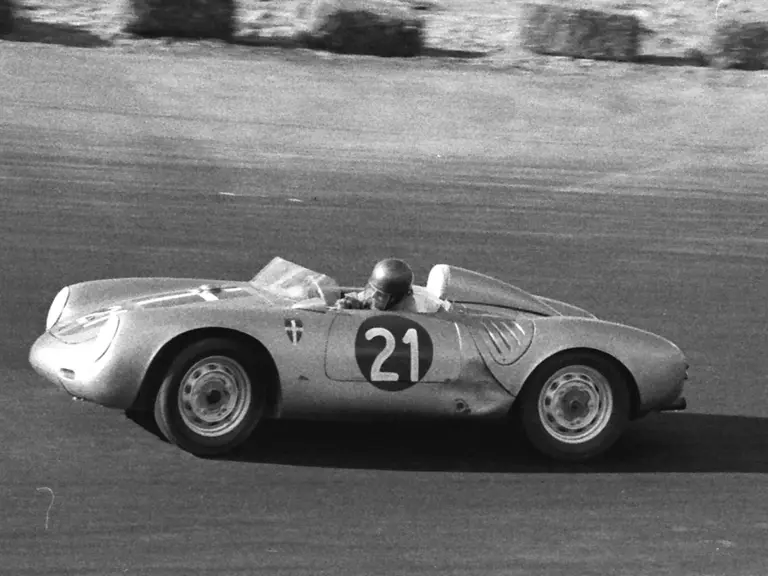

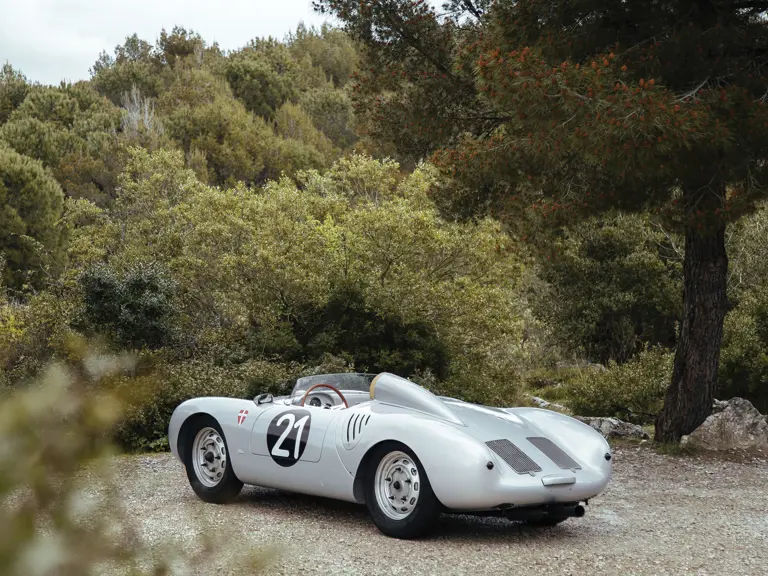
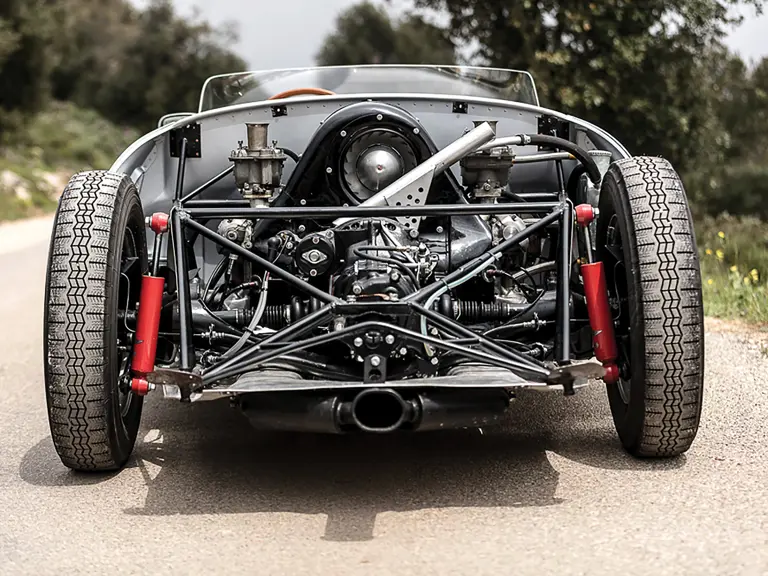
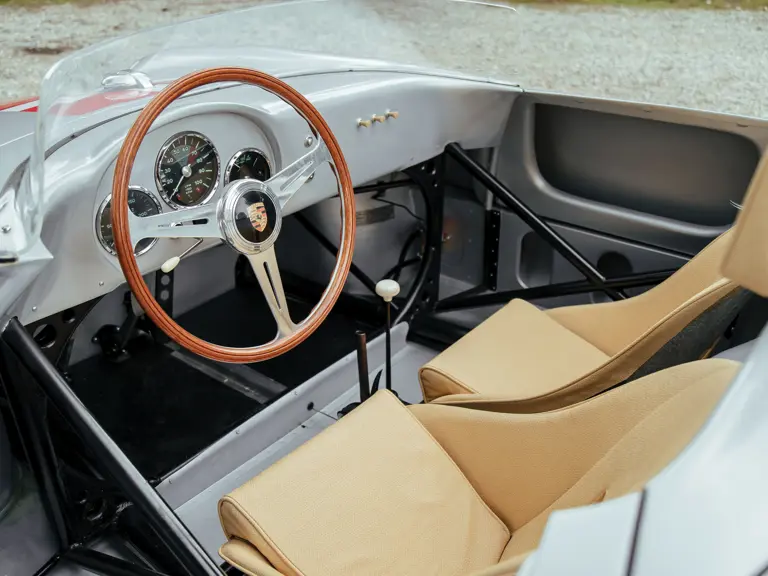
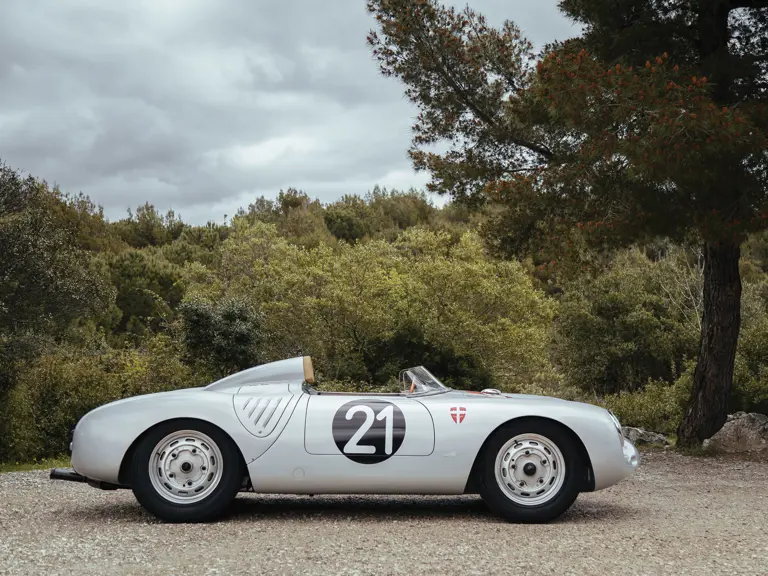

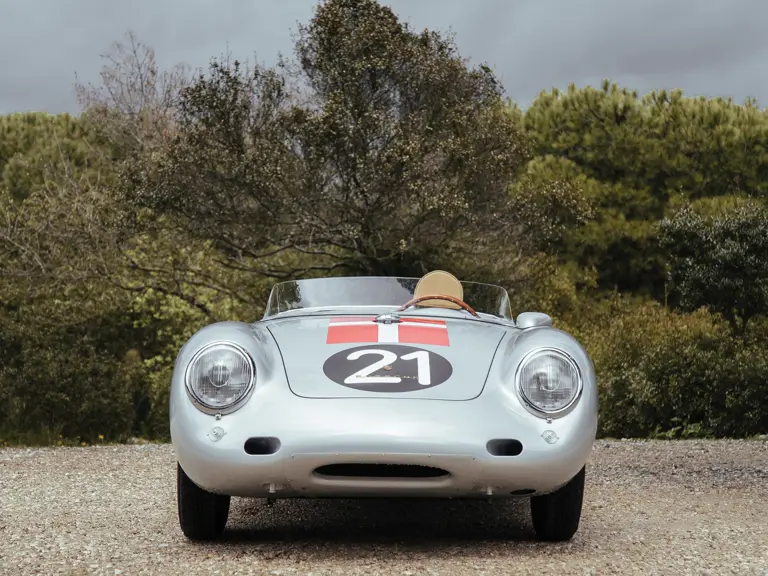
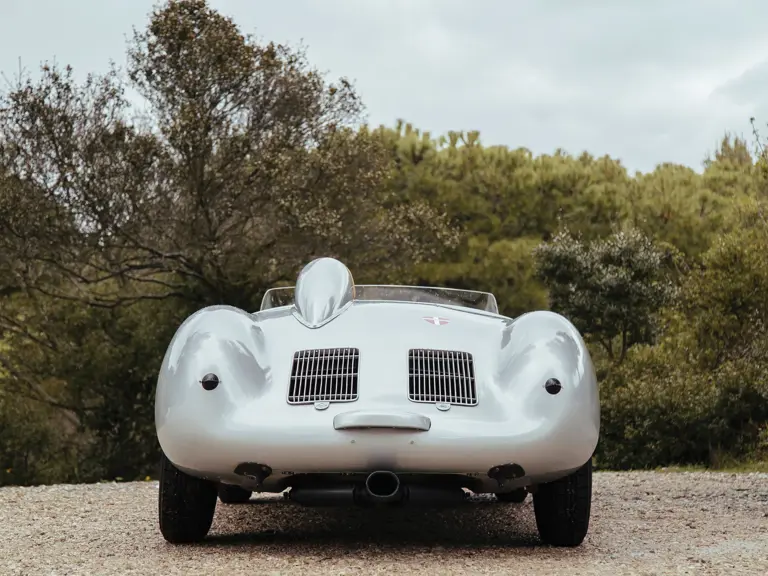
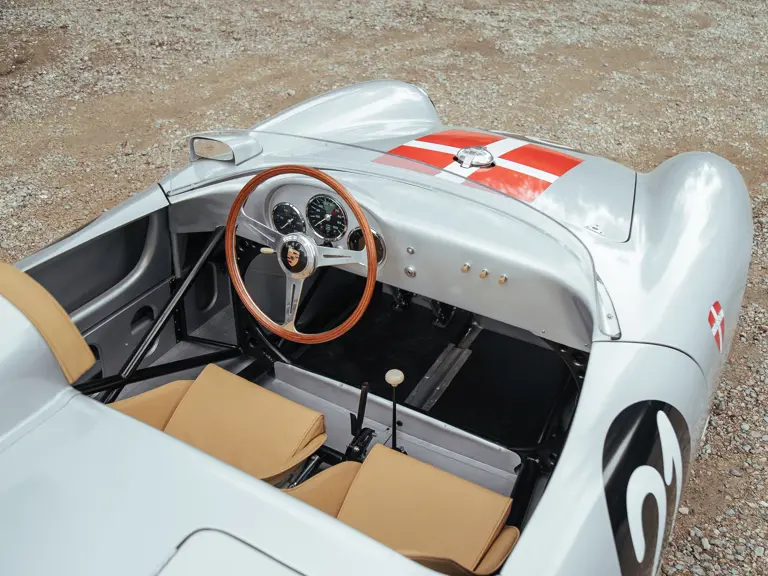
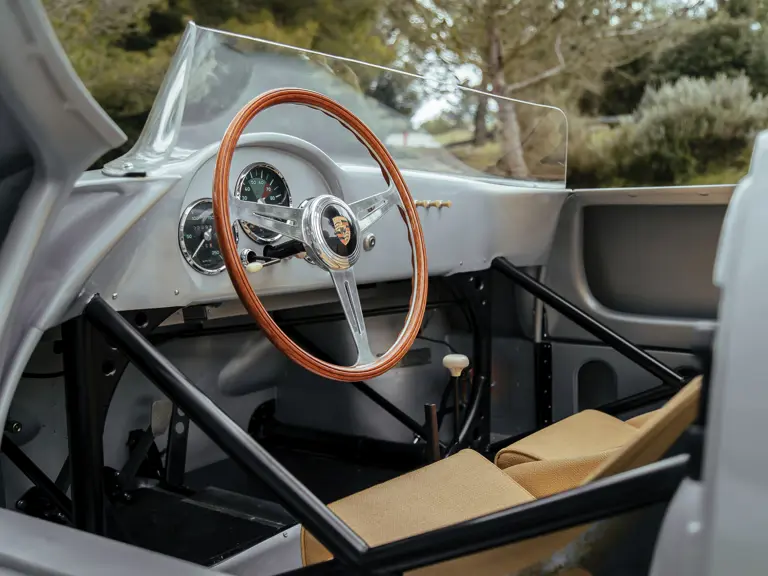
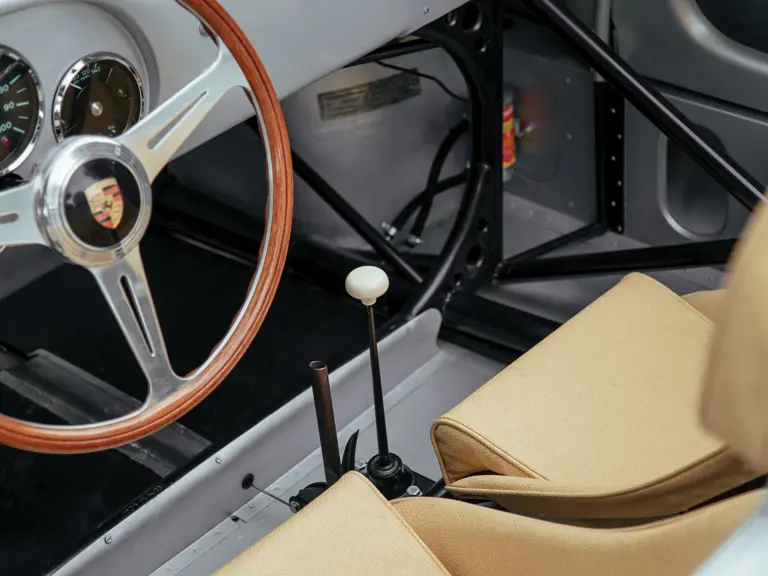

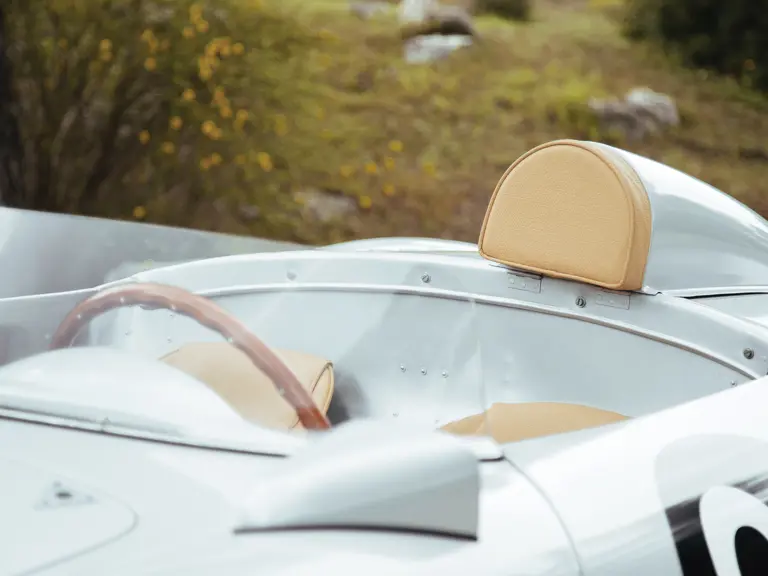
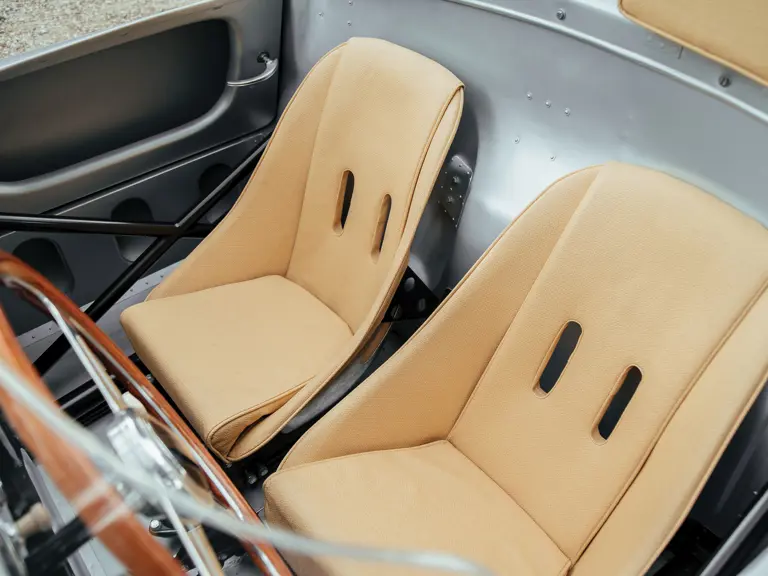
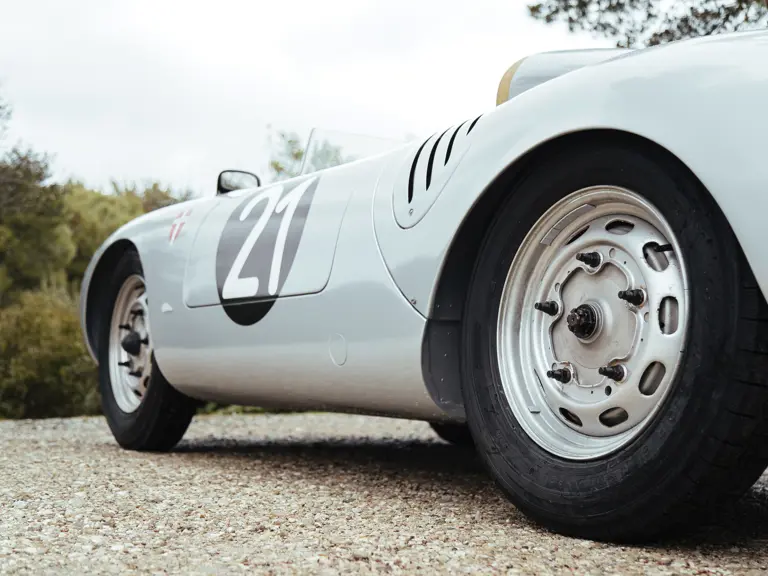
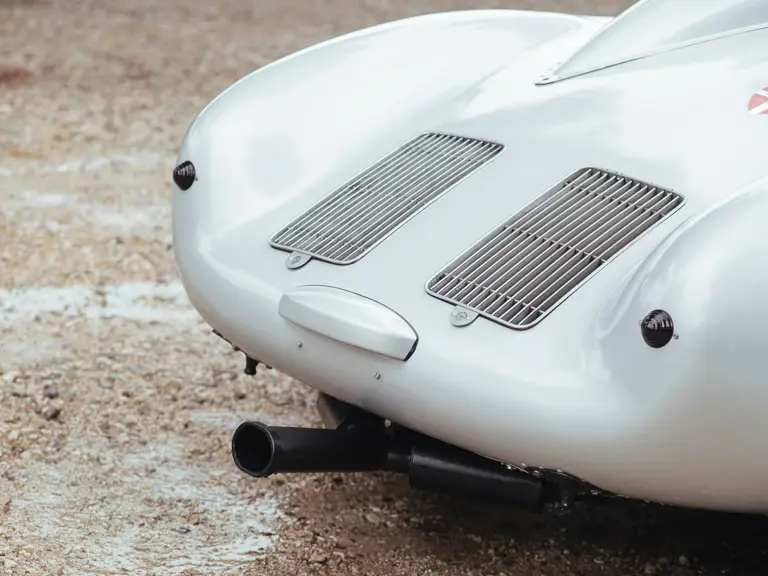
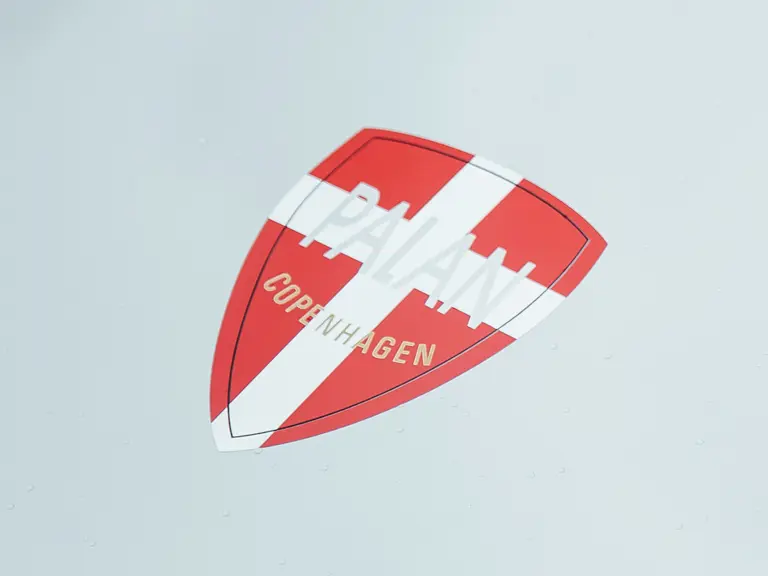
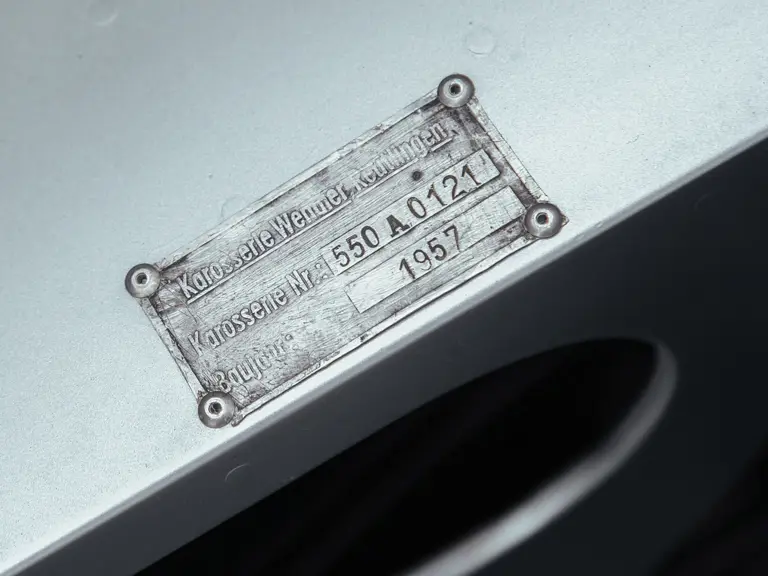
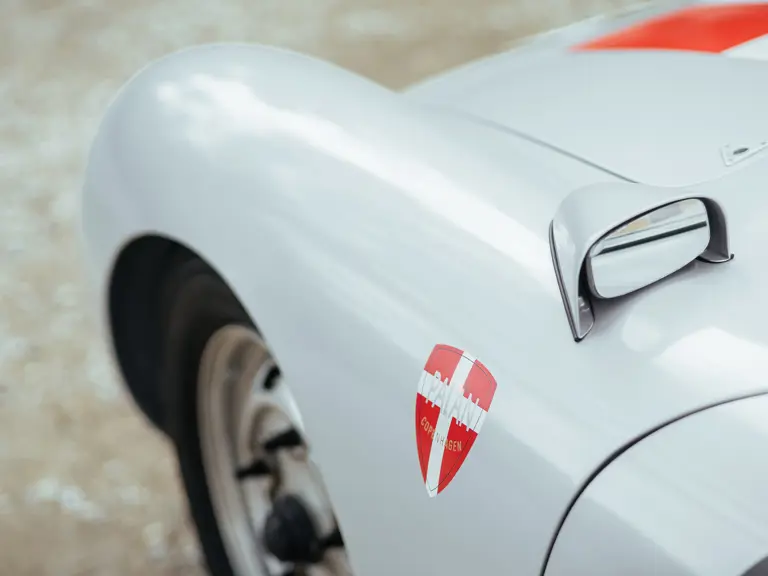
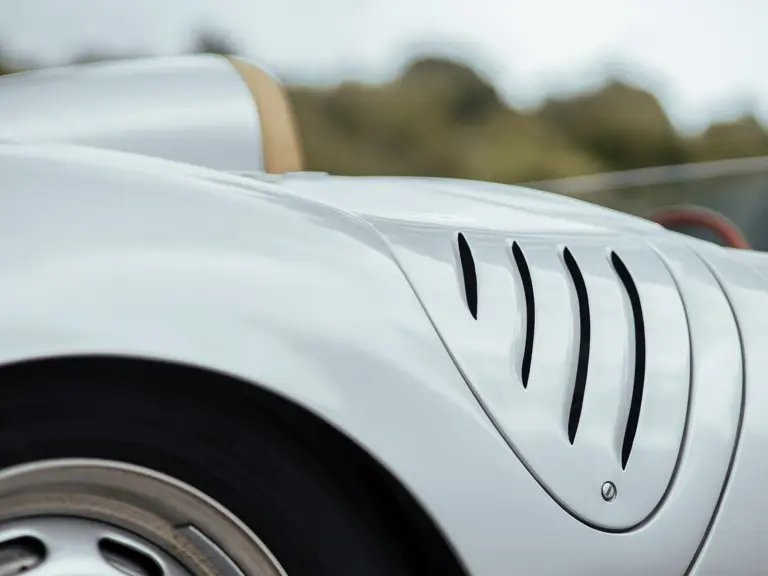
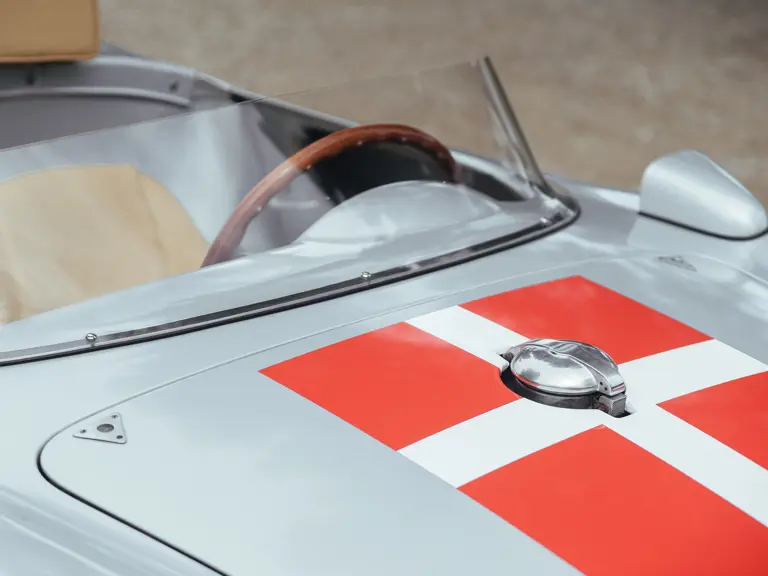
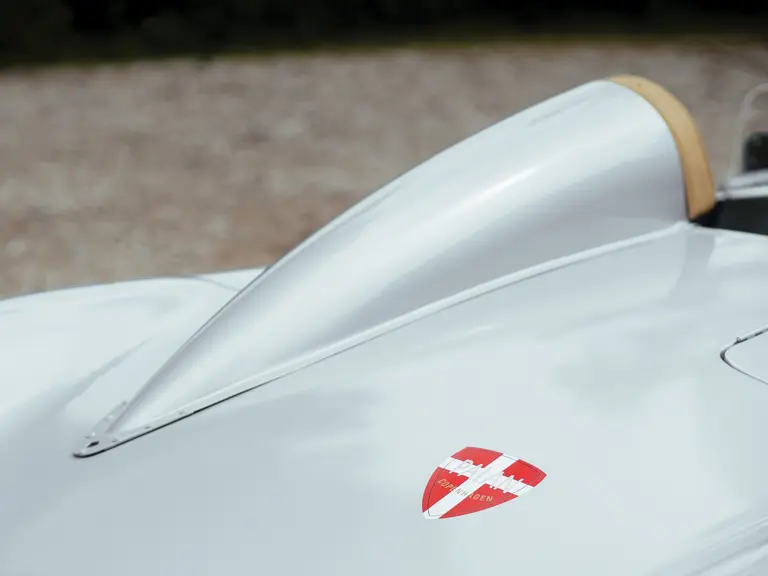

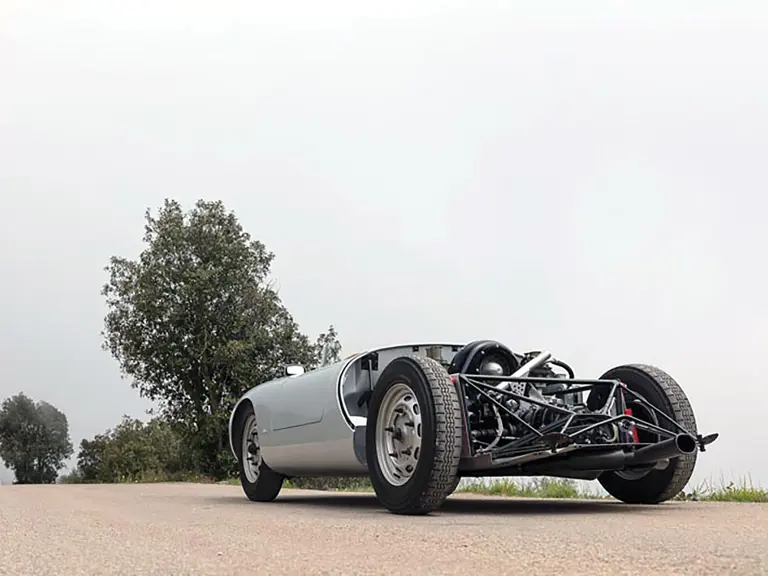
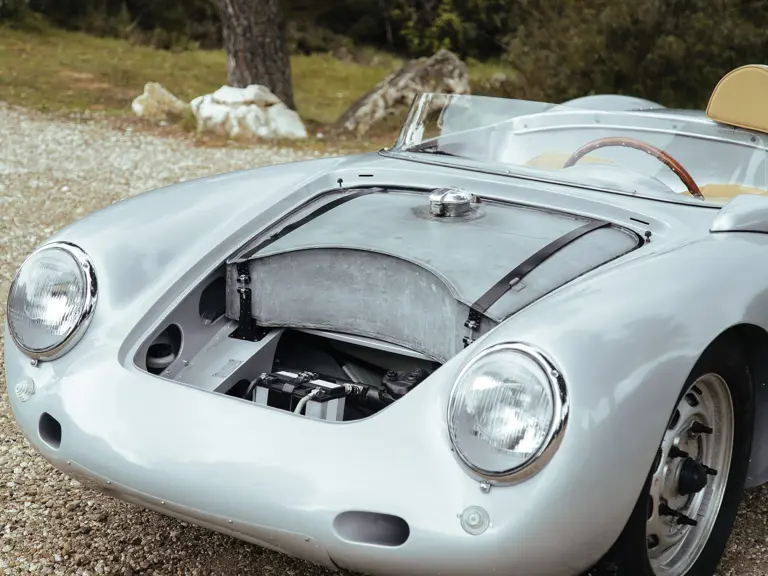
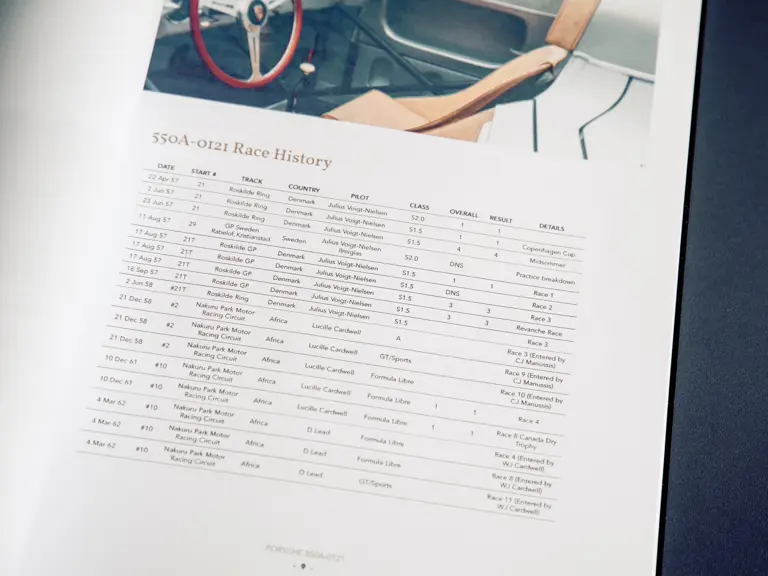
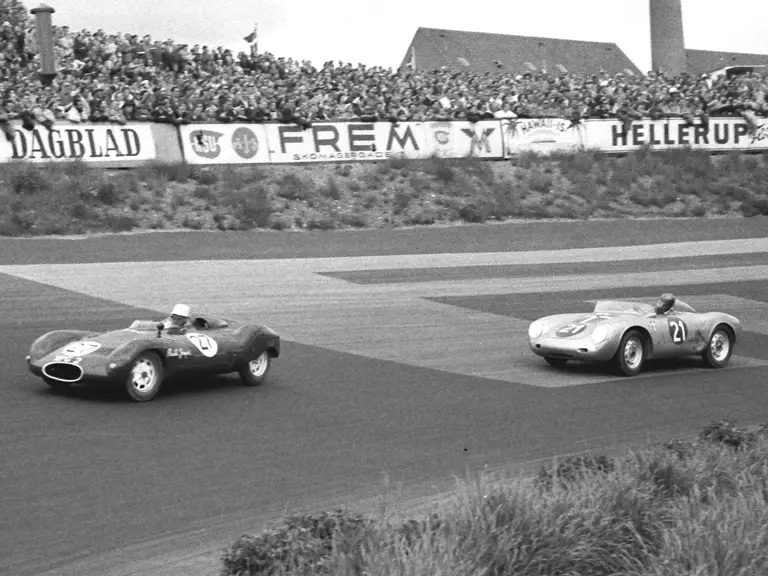

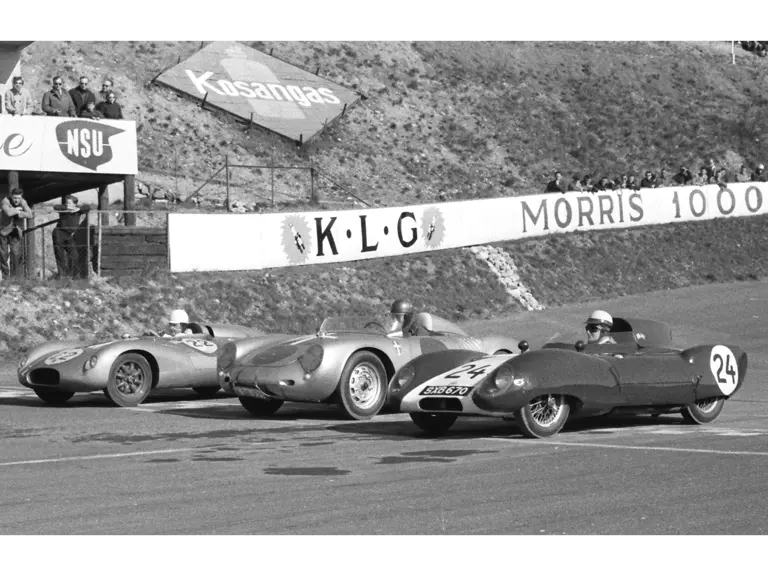
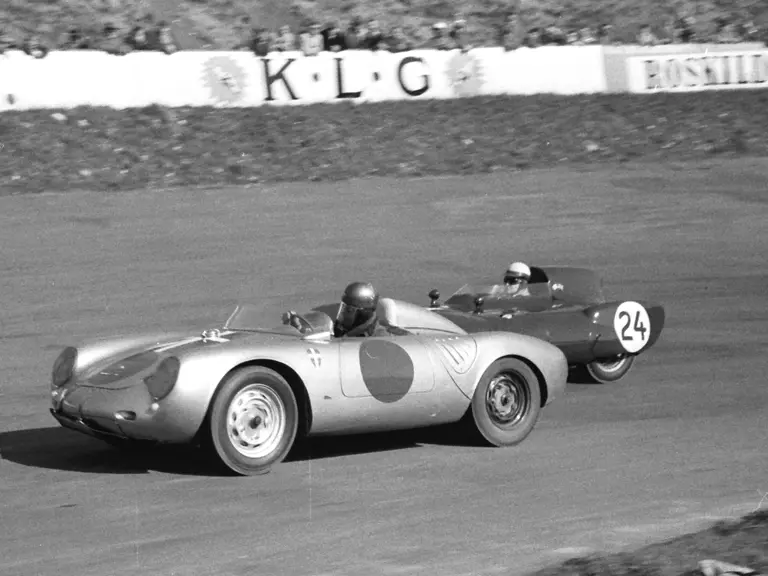
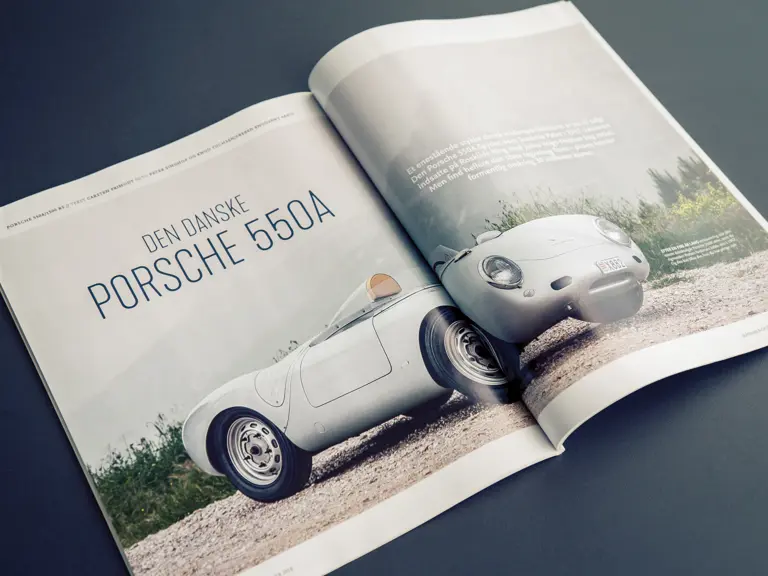
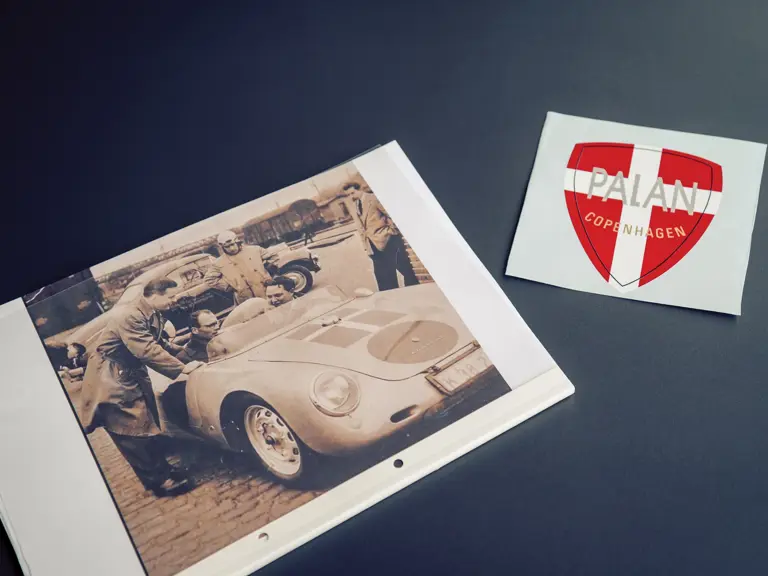
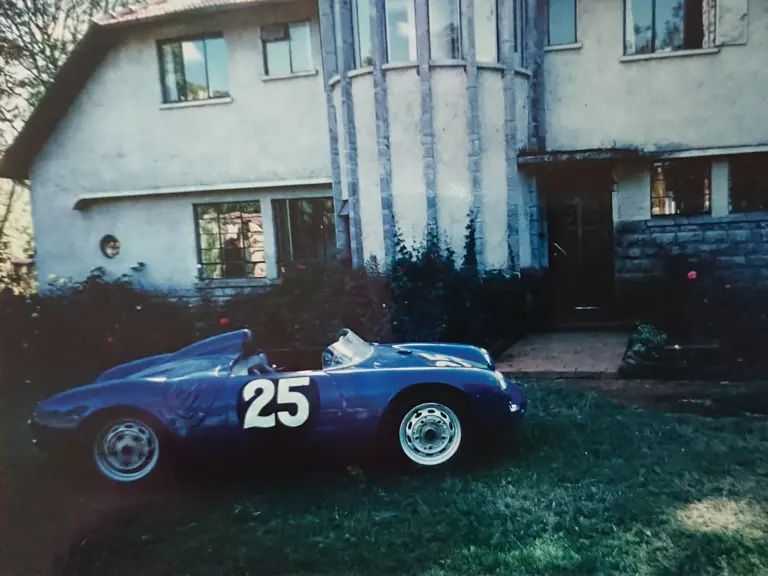
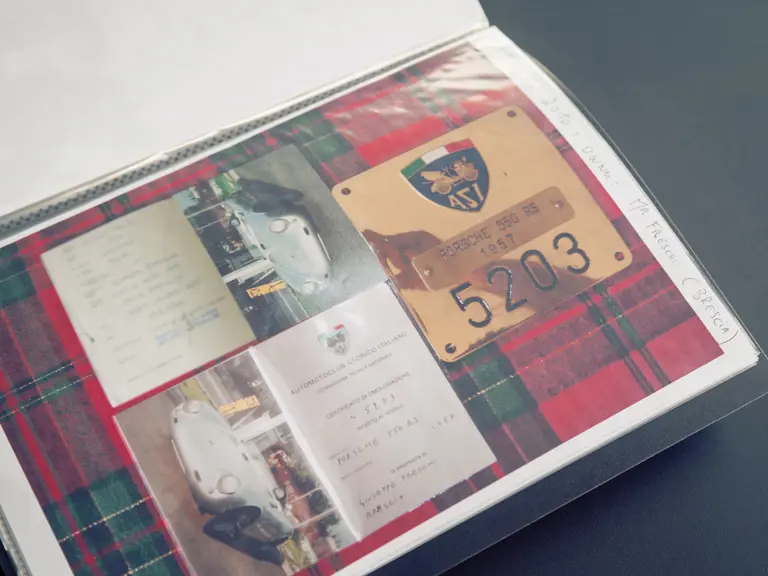
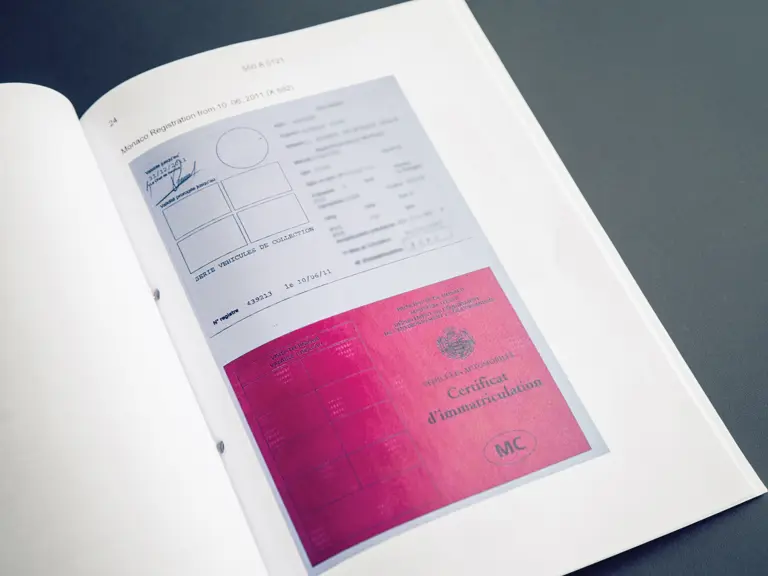

 | Cernobbio, Italy
| Cernobbio, Italy
